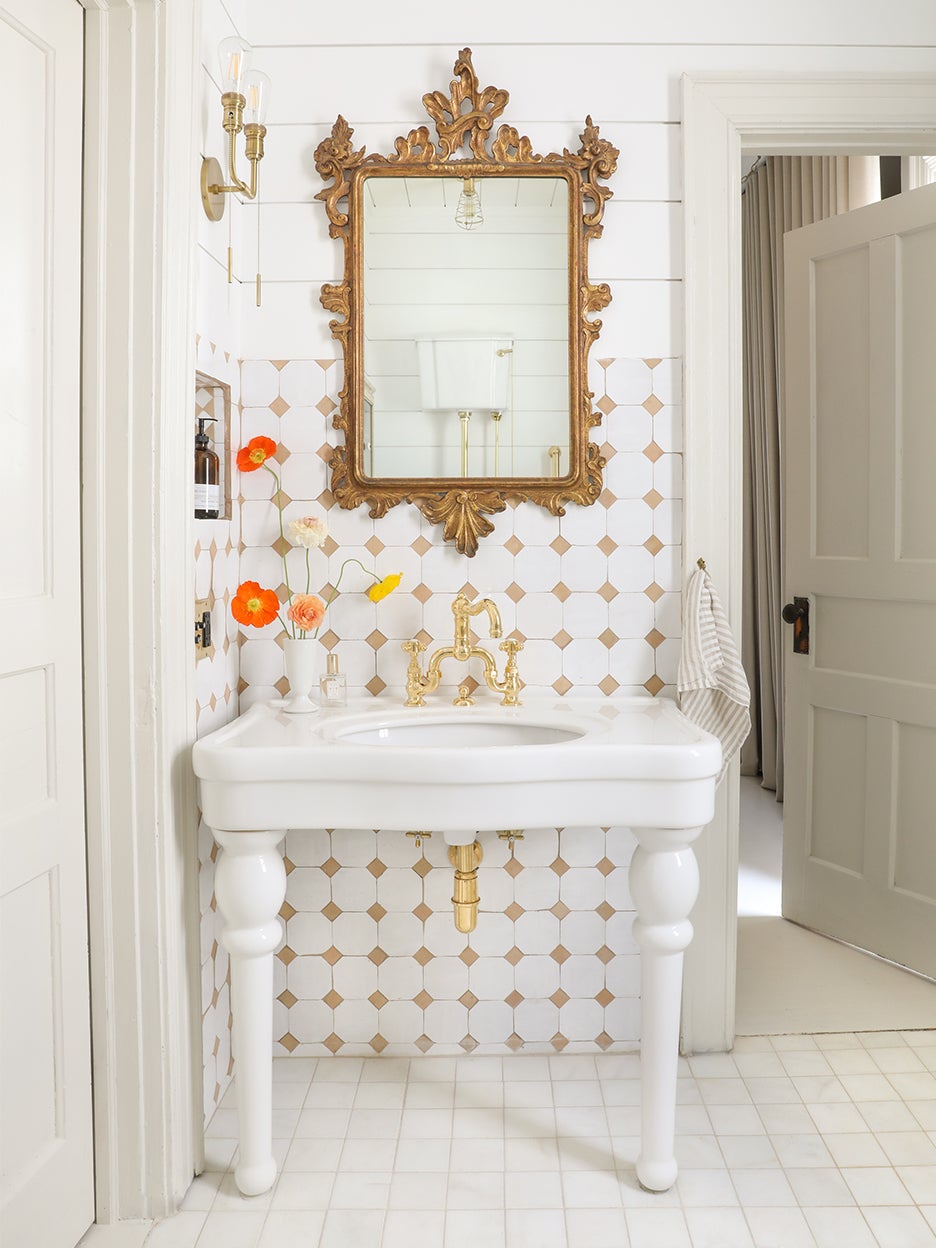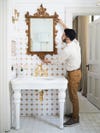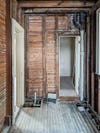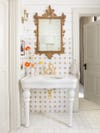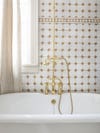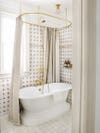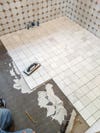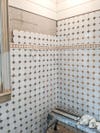How I Gave My 80-Square-Foot Bathroom Vintage Charm With Mostly New Pieces
Anthony D’Argenzio shares his tricks of the trade.
Updated Oct 11, 2018 5:34 PM
We may earn revenue from the products available on this page and participate in affiliate programs.
Restoring, repurposing, restyling. There’s a lot that goes into sprucing up an historic home, and no one knows that better than Zio and Sons’s Anthony D’Argenzio. In our bimonthly column, he takes us through every design detail in This Old Hudson Maison, his latest passion project in upstate New York.
Try to think outside the box when you’re working in a box—that’s my advice to anyone dealing with a cookie-cutter space. This bathroom is about 80 square feet, and it was a full gut renovation: Everything was brought down to the studs. A blank slate brings its own challenges, especially if you want to honor the original style of the building. We wanted the bathroom to feel vintage inspired and not like it was created from scratch. I believe that if you use better-quality materials, things will last longer and the integrity of the design won’t be compromised, so I focused on carefully selected finishes.
We were going for a warmer palette because of the hand-glazed terracotta tile from my Cle collaboration, which I knew right away I wanted to use in the shower. The room is a mix of whites and brasses, with a touch of natural stone. We used Farrow & Ball’s Schoolhouse White and picked a creamy grout instead of a gray option. It was important to me to use honest and natural materials only: There’s no plastic, acrylic, or drywall.
Quality is possible at all price points—you just have to do some digging. There are a few antiques, like the 19th-century mirror, which I sourced in Hudson, and the medicine cabinet, which actually hides the thermostat for the heated marble flooring. But I also brought in plenty of modern pieces. You can still have that old-world charm with new fixtures; all it takes is a bit of planning—here’s how I balanced the two in this bathroom.
Mix and Match Your Backdrop
It’s important to tell a story with texture. Try something different on each surface (just make sure it’s cohesive). That way, even if it’s an all-white room, it still has visual interest. This space has pine boards along the walls and ceiling, paired with honed Calacatta marble floors with subtle veining variation. Everything plays together and adds dimension to the room.
Choose the Right Silhouettes
I was inspired by classic shapes when sourcing each item: The freestanding sink, the type of shower, the bathtub, the high-tank toilet…these are all styles that would have been used hundreds of years ago. The cast-iron tub is the heaviest thing ever—it took a crane to get into the unit—and looks like an antique, but it’s from Barclay, just like the sink. The lighting is all unlacquered brass with exposed bulbs, which gives it a heritage look. The window is new but has an old style. It’s all about finding character in contemporary brands.
Don’t Skimp on the Details
This particular bathroom is a little jewel box of a space, so I really thought about how to incorporate smaller elements to make the mundane feel special. We used that cool border trim in the shower tiling, and went high with the toilet tank to add architectural interest. Then there’s the pretty, subtle embroidery work along the edge of the linen shower curtain; no one ever thinks about a piece like that having trim. My general rule of thumb is to focus on at least five ways to make a bathroom feel unique. It’s the details that make a bathroom shine, and every inch counts.
Incorporate Real Antiques Through Accessories
Whenever I travel, I try to pick up things that aren’t difficult to bring home. I found a set of six little hooks in France at a flea market and I’ve been holding onto them for years—I ended up using one as the towel rack next to the sink. Hardware is a good place to start with vintage because you can mix it into any design and it doesn’t take up a lot of space. These hooks are simple, but they’re kind of funky and cool.
Work Within Your Palette
When you’re sourcing different materials and products, it’s hard to have all the finishes look identical. Here, the light fixture and the faucet are from completely different companies—there’s no way that they’re going to match perfectly. But you can’t be too nitpicky on those details. The key is sticking to your color scheme and working with a range of vendors to put it all together. I know some people like mixing metals, but if I had added black or even chrome lighting, it would have totally thrown off the vintage vibe of the room.
Never Stop Treasure Hunting
For this renovation, I had the measurements of everything I needed in my Notes app—it came in handy when I wasn’t sure if something was going to fit. I look everywhere—from antiques shops (which are a little pricier), garage sales, and estate sales to Facebook Marketplace and even sometimes auctions. You never know where you’re going to score something.
Check back in two weeks for the next story in our series, in which D’Argenzio walks us through how he used reclaimed library doors to create a movable wall.
As told to Elly Leavitt.
